Introduction to Chinese Tables
Chinese tables are more than mere pieces of furniture; they are windows into centuries of cultural evolution, artistic expression, and social customs. From ancient times to the present day, tables have played a pivotal role in Chinese households, serving as focal points for family gatherings, tea ceremonies, and scholarly pursuits.
The history of Chinese table design is as rich and varied as China itself. Early tables were simple platforms, often low to the ground, reflecting the custom of sitting on mats. As lifestyles evolved, so did table designs, incorporating intricate craftsmanship and symbolic motifs that tell stories of China’s cultural heritage.
In this article, we’ll explore the fascinating world of Chinese tables, from traditional styles to modern interpretations, offering insights for travelers and interior design enthusiasts alike.
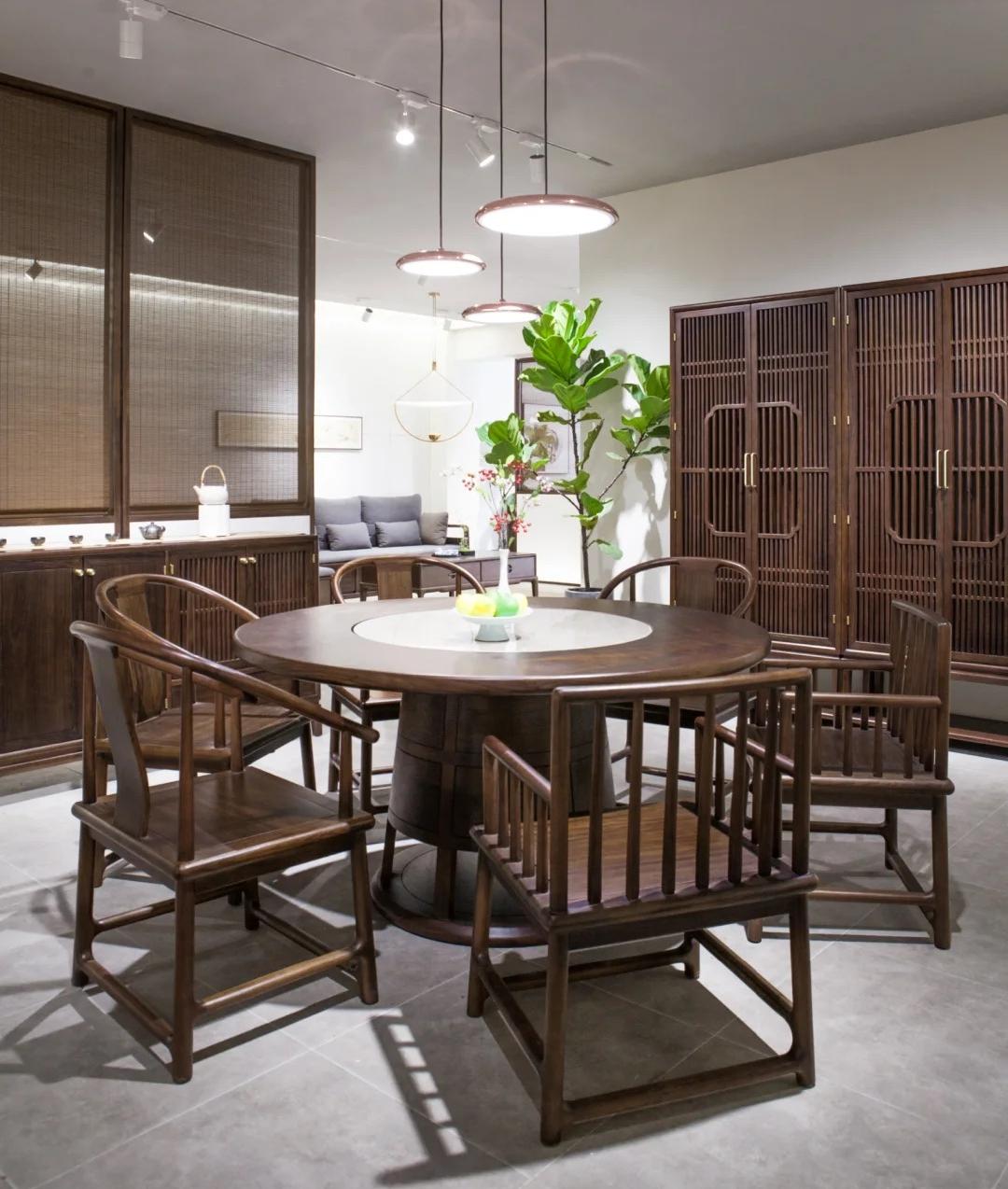
Traditional Chinese Table Styles
Round Tables: The Heart of Chinese Dining
Round tables hold a special place in Chinese culture, symbolizing unity and harmony. The circular shape allows all diners to face each other, promoting equality and facilitating conversation. These tables are central to the concept of “圆桌” (yuán zhuō), or “round table banquets,” where important discussions and celebrations take place.
Rectangle Tables: Versatility in Design
Rectangle tables serve various purposes in Chinese homes and public spaces. From dining to study, these tables adapt to different needs. Long, narrow tables known as “altar tables” are often used in entryways or against walls for displaying decorative items.
Kang Tables: Warmth and Functionality
In northern China, kang tables (炕桌) are designed to be used on a kang, a heated brick bed platform. These low tables are perfect for dining, working, or playing games while staying warm during cold winters.
Tea Tables: Ceremony and Contemplation
Tea tables, or “茶几” (chá jī), are essential in Chinese tea culture. Often lower and smaller than dining tables, they provide the perfect setting for the intricate rituals of tea preparation and appreciation.
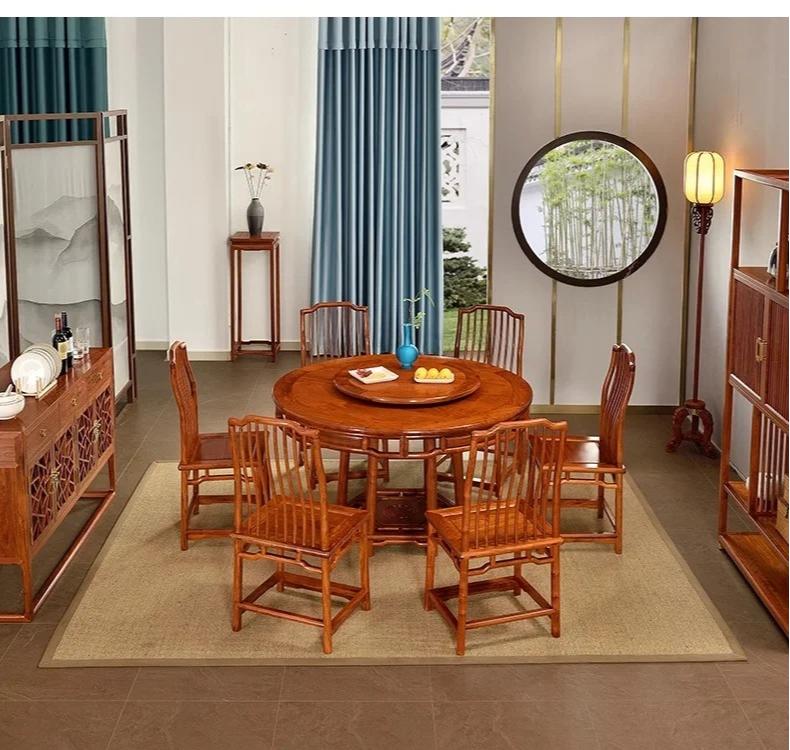
Materials and Craftsmanship
Chinese table craftsmanship is renowned for its quality and attention to detail. Common materials include:
- Rosewood (红木): Prized for its deep color and durability
- Elm (榆木): Valued for its beautiful grain patterns
- Bamboo (竹): Lightweight and sustainable
Traditional joinery techniques, such as mortise and tenon joints, ensure durability without the use of nails or glue. Lacquer work adds both beauty and protection to wooden surfaces, while inlay and carving techniques create intricate designs that elevate tables to works of art.
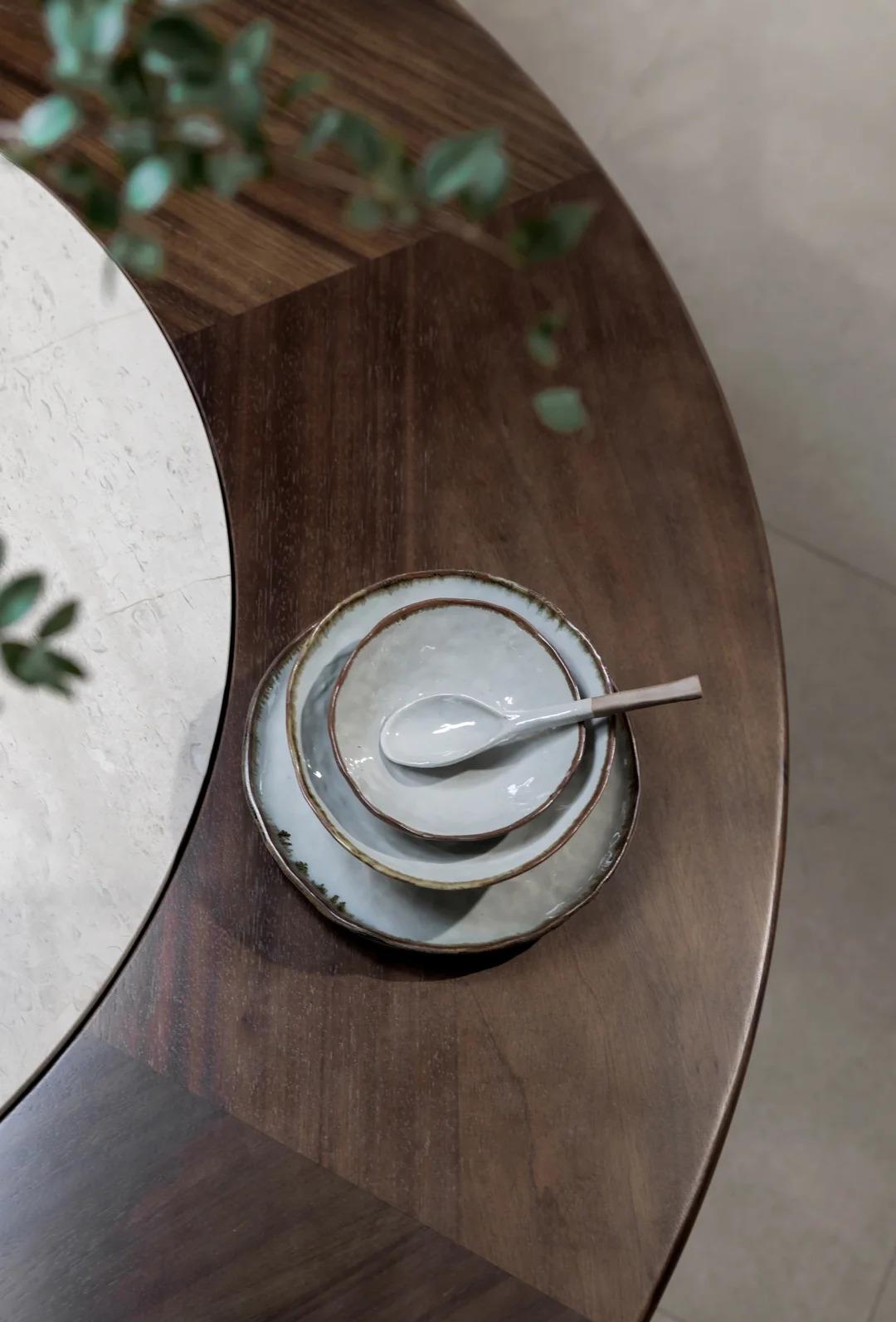
Symbolism and Decoration
Chinese tables often feature rich symbolism and decorative elements:
| Motif | Meaning |
|---|---|
| Dragon | Imperial power, strength |
| Phoenix | Femininity, rebirth |
| Peony | Wealth, honor |
| Bamboo | Resilience, flexibility |
Calligraphy and poetry may be incorporated into table designs, adding literary and artistic value. Feng shui principles influence table placement and design, with an emphasis on balance and harmony within a space.
Regional variations in decorative styles reflect local customs and artistic traditions, from the intricate carvings of Zhejiang to the bold lacquerwork of Fujian.
Famous Chinese Table Styles
Ming-Style Tables: Elegance in Simplicity
Ming Dynasty (1368-1644) tables are characterized by their clean lines, minimal ornamentation, and emphasis on the natural beauty of wood. These timeless designs continue to inspire furniture makers worldwide.
Qing Dynasty Tables: Opulence and Detail
Qing Dynasty (1644-1912) tables often feature more elaborate designs, with intricate carvings, inlays, and painted decorations reflecting the era’s prosperity and artistic achievements.
Huanghuali Wood Tables: Collector’s Treasures
Tables made from the prized huanghuali wood are highly sought after by collectors. This rare, fragrant wood produces furniture of exceptional quality and beauty.
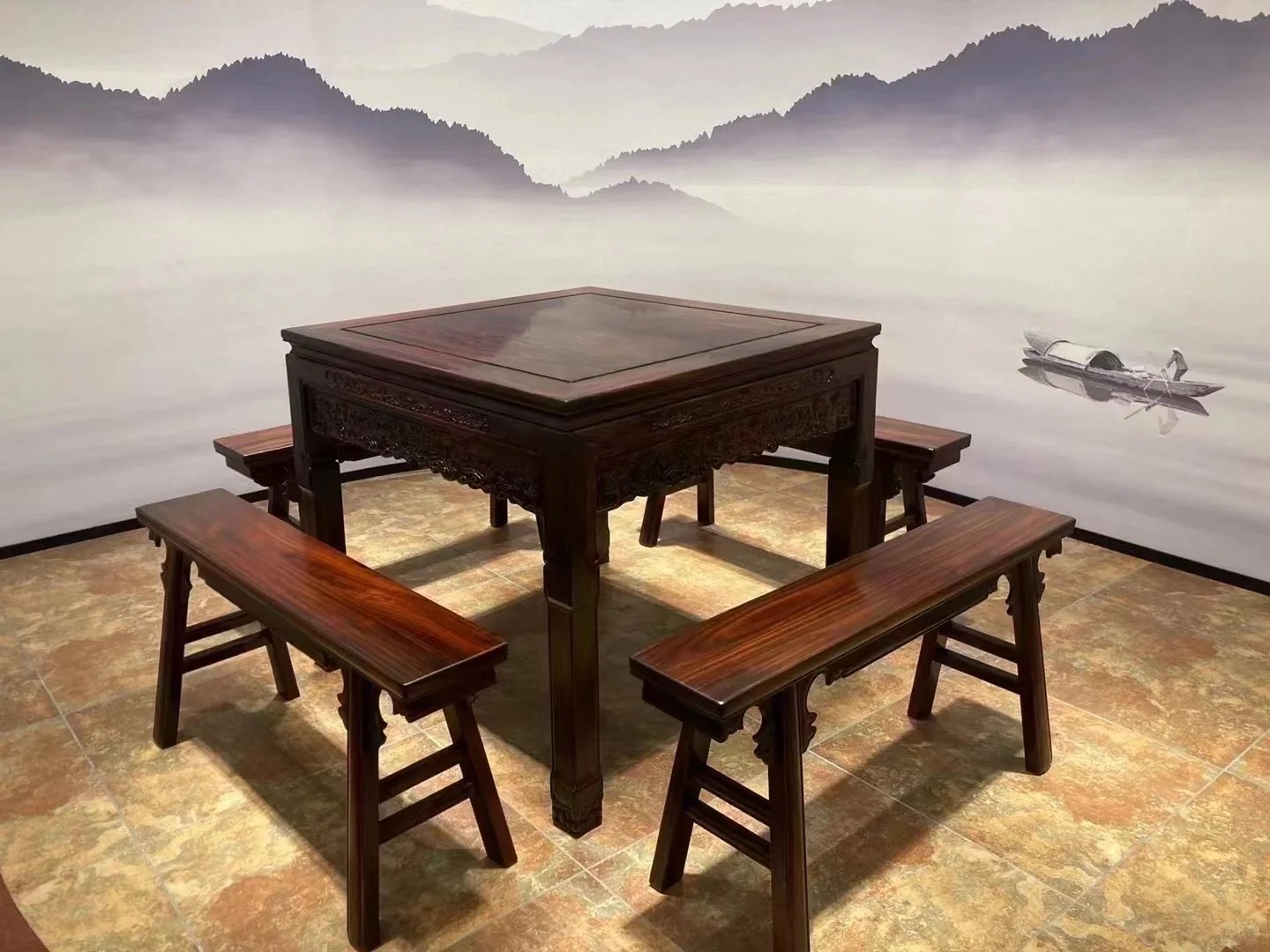
Chinese Tables in Different Settings
Chinese tables adapt to various environments, each with its unique characteristics:
- Garden Tables: Often made of stone or ceramic, designed to withstand outdoor elements
- Palace Tables: Elaborate and ornate, showcasing the finest craftsmanship
- Restaurant Tables: Large round tables with lazy Susans for shared dining experiences
- Modern Homes: Contemporary designs that blend traditional elements with modern aesthetics
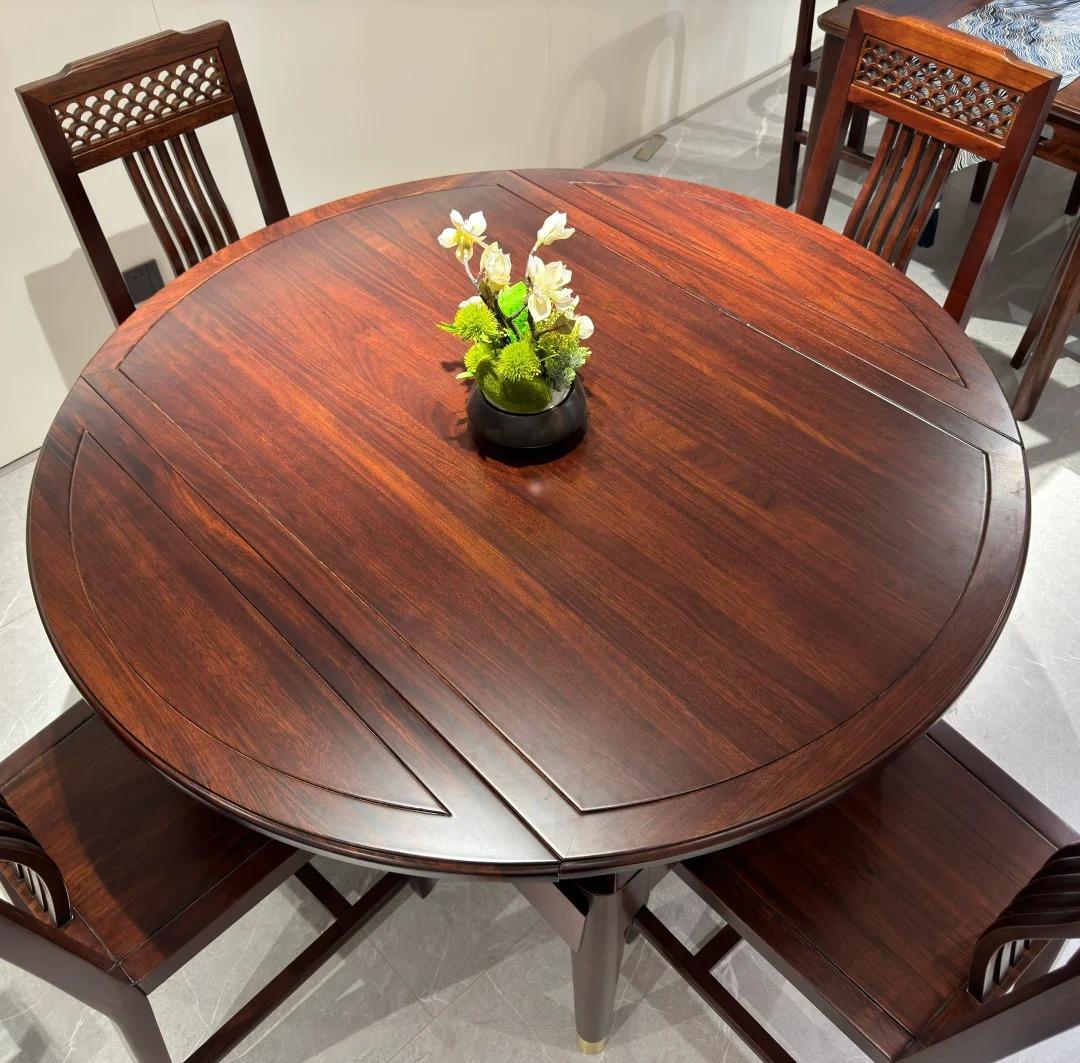
Chinese Tables for Travelers
For travelers interested in Chinese tables:
- Where to See: Visit the Palace Museum in Beijing, the Shanghai Museum, or traditional gardens in Suzhou to admire historic tables.
- Shopping: Look for table-inspired souvenirs like miniature replicas or decorative items in antique markets or high-end furniture stores.
- Etiquette: When dining at a round table, the seat facing the door is often reserved for the guest of honor. Wait for the host to begin eating before starting your meal.
- Home Decor Tips: Incorporate a Chinese-style tea table in your living room or use a decorative altar table in your entryway to add an elegant touch of Chinese culture to your home.
Chinese tables are more than functional pieces of furniture; they are repositories of history, culture, and artistry. As you explore China or seek to bring a piece of Chinese culture into your home, take time to appreciate the craftsmanship and symbolism embodied in these beautiful creations. From the simplicity of a Ming-style desk to the opulence of a Qing Dynasty dining table, each piece tells a story of China’s rich cultural heritage and enduring artistic traditions.





